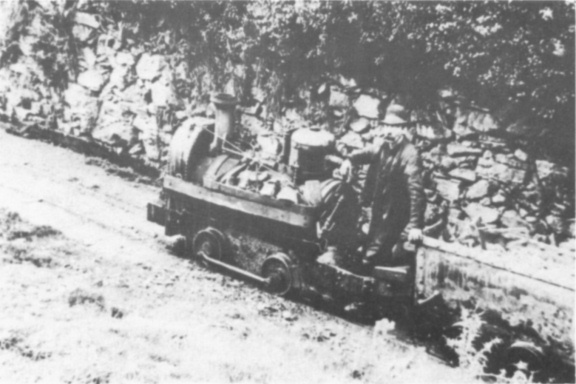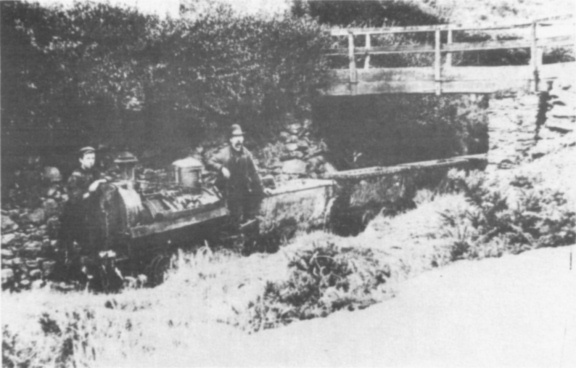
| THE INDUSTRIAL RAILWAY RECORD |
© DECEMBER 1969 |
A DAY TO BE REMEMBERED
L. G. POOLE
(Photographs by the Author)
In September 1913 my father and I set off for a tour of the east coast of the Isle of Man. Leaving the holiday crowds at Derby Castle and Onchan, we soon came to the 2ft gauge Groudle Glen railway and stopped for a while to see it in operation. I rode to the seaward terminus behind POLAR BEAR (Bagnall 1781 of 1906), one of the railway's two 2‑4‑0 side tank locomotives. The other, SEA LION (Bagnall 1484 of 1896), was in steam at the landward terminus, acting as the standby engine. Somehow, I was invited to travel back on POLAR BEAR'S tiny footplate, my first ride on a narrow gauge locomotive; we quickly ran round the train and set off back down the line again.
After the ride was over we set off for Laxey where we found another railway, this time of 1ft 7in gauge, which ran up a deep valley to the Great Laxey Lead Mine. From time to time trains would pass by, carrying ore for the washing plant further down the valley. The locomotive in charge was ANT, a tiny 0‑4‑0 front tank locomotive with inside cylinders and built by Stephen Lewin, of Poole in Dorset, in 1876. Its driver informed us that, because the tunnel sloped downwards out of the mine, the locomotives always hauled loaded trains in reverse, so that the driver would not be blinded by the smoke.


There appeared to be only one suitable vantage point from which to take photographs, so my father set up his camera and took two shots of empty trucks being hauled to the mine tunnel. (The two photographs are reproduced here). In the meantime I obtained permission to ride in the empty front truck down to the washery, and was told to keep my head down as the opening in the stone wall of the washery building was barely sufficient to allow the engine to pass through. The track here was on the second floor of the building, above the ore hoppers; there was a run-round loop and an extension from this led to a wood lined pit where ANT, and its stablemate BEE, were maintained and repaired.
The fore tank of each locomotive was detachable in order to gain access to the smokebox when required, while coal was carried on ledges at each side of the boiler and firebox. The boiler was of the usual Lewin 'Launch' type, often used on such small locomotives, although larger locomotives built by Lewin had boilers of a more conventional pattern. The footplate lived up to its name, being just large enough for a pair of boots, and the driver therefore had a little seat over the rear buffer beam. There was of course no room on the engine for me and so, as mentioned, I rode in a truck. This, being unsprung, did not give a first class ride, but when one is young such things are not of much account.
While the writer has ridden on several miniature steam locomotives since emigrating to Australia, the experience of travelling on two narrow gauge lines in one day has never been duplicated and, as the title of this short account says, it was indeed a day to remember.
(We regret to report the death of Mr Poole in 1969 shortly after he had written this article - Hon. Eds.)
*************************************************************************
"Owing to frequent collisions with buffaloes it is essential that both end panels should be suitably reinforced...." (Extract from a specification for metre gauge railcars for the Sabah Railway in 1967. - G.A.)